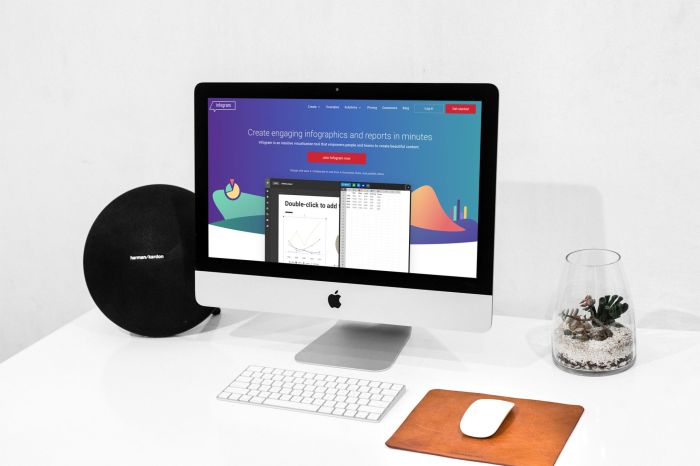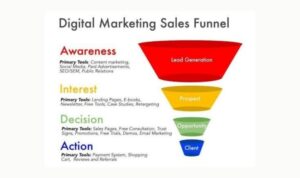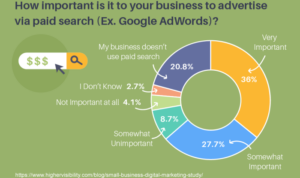Creating Interactive Content sets the stage for captivating user experiences, driving meaningful engagement through a variety of dynamic online tools and techniques. From quizzes to games, this dynamic approach revolutionizes digital interaction.
Dive into the world of interactive content creation and discover how to craft compelling experiences that leave a lasting impact on your audience.
Overview of Interactive Content

Interactive content is like the secret sauce of engagement, y’all. It’s all about gettin’ your audience involved, makin’ ’em feel like they part of the experience, not just passively scrollin’ through a page. It’s like when you play a game or take a quiz on a website, or participate in a poll or survey on social media. That’s interactive content, baby!Now, let’s talk about why it’s so important to have interactive content on your websites or socials.
First off, it grabs people’s attention and keeps ’em around longer. When folks are actively engagin’ with your content, they’re more likely to remember it and share it with their friends. Plus, it helps you learn more ’bout your audience – what they like, what they don’t, what makes ’em tick. And let’s not forget, it can boost your and drive more traffic to your site.
It’s like win-win-win, am I right?
Benefits of Interactive Content
- Increases engagement and keeps audiences hooked.
- Encourages social sharing and boosts brand awareness.
- Provides valuable insights into audience preferences and behaviors.
- Improves and drives more traffic to websites.
Examples of Successful Interactive Content Campaigns
Remember that Black Mirror Bandersnatch episode on Netflix? That was some next-level interactive content right there – choose your own adventure style! People were talkin’ ’bout it for weeks!
Then there’s the Starbucks Cup Magic campaign, where customers could scan their cups with an app and unlock special holiday content. It was like a holiday surprise every time you took a sip!
And who could forget the Old Spice “Youland” experience? Users could explore a crazy virtual world and interact with different characters – it was like steppin’ into a wacky video game!
Types of Interactive Content: Creating Interactive Content

Interactive content comes in various forms and serves different purposes to engage audiences effectively. Let’s explore some popular types and their advantages.
1. Quizzes
Quizzes are interactive tools that test knowledge or personality traits. They are engaging, shareable, and provide instant gratification for users. Brands use quizzes to drive traffic, generate leads, and increase brand awareness. For example, Buzzfeed creates fun and viral quizzes that attract a large audience.
2. Polls
Polls are a great way to gather feedback, opinions, and insights from your audience. They encourage participation and interaction, making users feel heard and valued. Brands use polls to understand customer preferences, conduct market research, and increase engagement on social media platforms. For instance, Twitter polls are commonly used by brands to spark conversations and gather feedback.
3. Calculators, Creating Interactive Content
Calculators are useful tools that provide personalized results based on user input. They help users make informed decisions, solve problems, and understand complex concepts. Brands use calculators to drive conversions, educate their audience, and establish credibility. A great example is the mortgage calculator on Bankrate’s website, which helps users estimate their monthly payments.
4. Games
Games are highly engaging and entertaining interactive content that can keep users entertained for hours. They increase dwell time on websites, boost brand loyalty, and create memorable experiences for users. Brands use games to promote products, drive engagement, and create a fun brand image. An excellent example is McDonald’s Monopoly game, which successfully drives foot traffic to their restaurants.
Strategies for Creating Interactive Content
Creating interactive content is all about engaging your audience and providing them with a unique experience that keeps them coming back for more. Here are some strategies to help you brainstorm, design, develop, and optimize interactive content for different platforms and devices.
Brainstorming and Planning Interactive Content Ideas
When brainstorming ideas for interactive content, start by understanding your target audience and what type of content they would find engaging. Consider the goals you want to achieve with your interactive content and how it aligns with your overall marketing strategy. Collaborate with your team to generate creative ideas that are interactive, innovative, and relevant to your brand.
- Conduct audience research to understand their preferences and interests.
- Create a content calendar to plan out interactive content ideas in advance.
- Use tools like mind mapping or mood boards to visually organize your ideas.
Designing and Developing Interactive Content
When designing and developing interactive content, focus on creating a seamless user experience that is both visually appealing and easy to navigate. Incorporate interactive elements such as quizzes, polls, sliders, and animations to keep your audience engaged and entertained.
- Use responsive design to ensure your interactive content looks great on all devices.
- Keep the user interface simple and intuitive for easy interaction.
- Test your interactive content across different browsers and devices to ensure compatibility.
Optimizing Interactive Content for Different Platforms and Devices
To optimize your interactive content for different platforms and devices, consider the specific requirements and limitations of each platform. Adapt your content to fit the screen size and functionality of various devices to provide a consistent user experience.
- Optimize images and videos for fast loading times on mobile devices.
- Use HTML5 and CSS3 to create interactive content that is compatible with modern web browsers.
- Implement analytics tools to track user engagement and performance metrics across different platforms.
Tools and Platforms for Creating Interactive Content
Creating interactive content requires the right tools and platforms to bring your ideas to life. Let’s explore some popular options and how they stack up against each other.
Popular Tools and Platforms
When it comes to creating interactive content, there are several tools and platforms available in the market. Here are some of the most popular ones along with their key features, pricing, and user-friendliness:
- Adobe Spark: Adobe Spark offers a user-friendly interface with a wide range of templates for creating interactive videos, web pages, and graphics. Pricing starts at $9.99 per month.
- Canva: Canva is known for its versatility and ease of use, offering a variety of interactive design tools. The platform is free to use with the option to upgrade for additional features.
- Ceros: Ceros is a more advanced platform that allows for creating highly interactive and engaging content. Pricing is available upon request and is based on project requirements.
- ThingLink: ThingLink specializes in interactive images and videos, making it easy to add clickable hotspots to your content. Pricing starts at $20 per month.
Choosing the right tool for your interactive content project depends on factors like your budget, technical skills, and the level of interactivity you want to achieve. Consider the features offered by each platform and how they align with your project goals to make an informed decision.



